Volume 1-8 (2009-16)
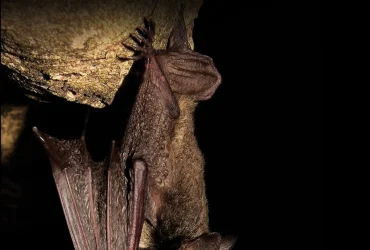 v6i1.127
v6i1.127ISSN: 1800-427X (print)
eISSN: 1800-427X (online)
DOI:10.47605/tapro.v6i1.127
Submitted date: 31 January 2013
Accepted date: 23 April 2014
Published date: 29 June 2014
Pp. 47–48.
A pentastome (Armillifer moniliformis) parasitizing a common rat-snake
T.S.P. Fernando* & V.A.K. Fernando
*Corresponding author. E-mail: saminda@ou.ac.lk
Pentastomes are a group of relatively poorly known parasites that are neglected both in veterinary parasitology text books and curriculum. The pentastomes are currently classified in a separate phylum, Pentastomida, because they exhibit characteristics of both the phylum Arthropoda and Annelid. This group comprises of approximately 100 species of vermiform arthropods that are all obligate parasites of the lower and less often upper respiratory tract of vertebrates. Adult pentastomes are segmented and worm like, measuring 0.5 to 20 cm in length. However they are easily distinguished from any other parasite because they bear 2 pairs of retractile hooks on either side of the mouth. They also have a distinct tongue shaped appearance; hence they are called linguatulids or tongue worms.
Section Editor: Colin Chapman
eISSN: 1800-427X (online)
DOI:10.47605/tapro.v6i1.127
Submitted date: 31 January 2013
Accepted date: 23 April 2014
Published date: 29 June 2014
Pp. 47–48.
A pentastome (Armillifer moniliformis) parasitizing a common rat-snake
T.S.P. Fernando* & V.A.K. Fernando
*Corresponding author. E-mail: saminda@ou.ac.lk
Pentastomes are a group of relatively poorly known parasites that are neglected both in veterinary parasitology text books and curriculum. The pentastomes are currently classified in a separate phylum, Pentastomida, because they exhibit characteristics of both the phylum Arthropoda and Annelid. This group comprises of approximately 100 species of vermiform arthropods that are all obligate parasites of the lower and less often upper respiratory tract of vertebrates. Adult pentastomes are segmented and worm like, measuring 0.5 to 20 cm in length. However they are easily distinguished from any other parasite because they bear 2 pairs of retractile hooks on either side of the mouth. They also have a distinct tongue shaped appearance; hence they are called linguatulids or tongue worms.
Section Editor: Colin Chapman
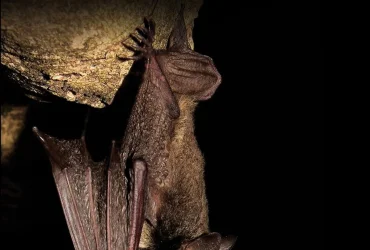 v6i1.126
v6i1.126ISSN: 1800-427X (print)
eISSN: 1800-427X (online)
DOI:10.47605/tapro.v6i1.126
Submitted date: 30 June 2013
Accepted date: 17 January 2014
Published date: 29 June 2014
Pp. 46.
Tachaea spongillicola (Cymothoida: Corallanidae) from West Bengal, India
M.K.D. Roy* & S. Mitra
*Corresponding author. E-mail: malay_7@rediffmail.com
The isopod Tachaea spongillicola (Corallanidae) was described by Stebbing (1907) from the freshwater sponge Eunapius carteri (formerly Spongilla carteri) at the Indian Museum Tank, Kolkata, India. Since then, this species did not appear in literature for nearly hundred years. In 2003, Mariappan et al. reported this isopod from three locations along the course of the Cauvery River near Tiruchirapalli, India. They found this species to occur on three species of prawns. However, during a recent survey at Burdwan (on 18 December 2012), the first author collected six specimens of this species (Registration Number ZSI C 6007/2) on the prawn Macrobrachium lamarrei from Damodar River at Kathgolaghat near Polempur (~2 km SE of Burdwan Town). The size of the isopod specimens varied between 7.6–8.0mm and 2.6–3.5mm. The specimens were found to fully match with the description of Stebbing (1907). Thus this endemic species is here recorded after 106 years from West Bengal.
Section Editor: Wolfgang Wägele
eISSN: 1800-427X (online)
DOI:10.47605/tapro.v6i1.126
Submitted date: 30 June 2013
Accepted date: 17 January 2014
Published date: 29 June 2014
Pp. 46.
Tachaea spongillicola (Cymothoida: Corallanidae) from West Bengal, India
M.K.D. Roy* & S. Mitra
*Corresponding author. E-mail: malay_7@rediffmail.com
The isopod Tachaea spongillicola (Corallanidae) was described by Stebbing (1907) from the freshwater sponge Eunapius carteri (formerly Spongilla carteri) at the Indian Museum Tank, Kolkata, India. Since then, this species did not appear in literature for nearly hundred years. In 2003, Mariappan et al. reported this isopod from three locations along the course of the Cauvery River near Tiruchirapalli, India. They found this species to occur on three species of prawns. However, during a recent survey at Burdwan (on 18 December 2012), the first author collected six specimens of this species (Registration Number ZSI C 6007/2) on the prawn Macrobrachium lamarrei from Damodar River at Kathgolaghat near Polempur (~2 km SE of Burdwan Town). The size of the isopod specimens varied between 7.6–8.0mm and 2.6–3.5mm. The specimens were found to fully match with the description of Stebbing (1907). Thus this endemic species is here recorded after 106 years from West Bengal.
Section Editor: Wolfgang Wägele
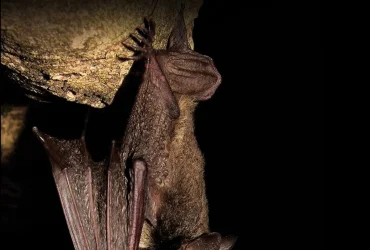 v6i1.125
v6i1.125ISSN: 1800-427X (print)
eISSN: 1800-427X (online)
DOI:10.47605/tapro.v6i1.125
Submitted date: 30 June 2013
Accepted date: 5 May 2014
Published date: 29 June 2014
Pp. 32–45, Pl. 9.
STUDIES ON DIVERSITY, DISTRIBUTION, AND CONSERVATION OF THE BAT FAUNA IN MAHARASHTRA STATE, INDIA
Vishakha S. Korad
*Corresponding author. E-mail: vishakhakorad@yahoo.com
Abstract
Maharashtra state is the third largest by area in India. Maharashtra’s bat fauna comprises eight families, 23 genera, and 41 species, most of which are insectivorous microchiropterans. Eleven of the 41 bat species are found throughout the state whereas 21 species have few colonies with restricted distribution. Five species endemic to South Asia occur in the state. Maharashtra is separated into six divisions in this paper on the basis of geography, topography, and agro-climatic conditions; the presence of bat species and their roosting sites are reported per division. The IUCN status of bat species is listed, as well as endemism. Types of forests in the state and forest cover in each of the six divisions are considered for discussion in the context of bat distribution. Bat species richness and evenness are compared using the Shannon-Weaver (S-W) Index and Simpson’s indices (Reciprocal and Diversity). The results are discussed from the viewpoint of conservation of bat fauna in forest areas in general and the Western Ghats region of the state in particular.
Key words : biogeography, Chiroptera, ecology, roosting, species richness, Western Ghats
Section Editor: Asoka Yapa
eISSN: 1800-427X (online)
DOI:10.47605/tapro.v6i1.125
Submitted date: 30 June 2013
Accepted date: 5 May 2014
Published date: 29 June 2014
Pp. 32–45, Pl. 9.
STUDIES ON DIVERSITY, DISTRIBUTION, AND CONSERVATION OF THE BAT FAUNA IN MAHARASHTRA STATE, INDIA
Vishakha S. Korad
*Corresponding author. E-mail: vishakhakorad@yahoo.com
Abstract
Maharashtra state is the third largest by area in India. Maharashtra’s bat fauna comprises eight families, 23 genera, and 41 species, most of which are insectivorous microchiropterans. Eleven of the 41 bat species are found throughout the state whereas 21 species have few colonies with restricted distribution. Five species endemic to South Asia occur in the state. Maharashtra is separated into six divisions in this paper on the basis of geography, topography, and agro-climatic conditions; the presence of bat species and their roosting sites are reported per division. The IUCN status of bat species is listed, as well as endemism. Types of forests in the state and forest cover in each of the six divisions are considered for discussion in the context of bat distribution. Bat species richness and evenness are compared using the Shannon-Weaver (S-W) Index and Simpson’s indices (Reciprocal and Diversity). The results are discussed from the viewpoint of conservation of bat fauna in forest areas in general and the Western Ghats region of the state in particular.
Key words : biogeography, Chiroptera, ecology, roosting, species richness, Western Ghats
Section Editor: Asoka Yapa
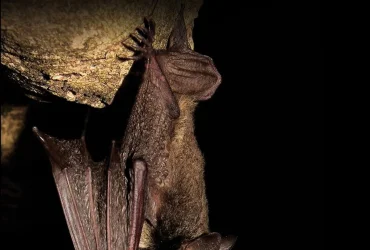 v6i1.124
v6i1.124ISSN: 1800-427X (print)
eISSN: 1800-427X (online)
DOI:10.47605/tapro.v6i1.124
Submitted date: 18 December 2013
Accepted date: 13 March 2014
Published date: 29 June 2014
Pp. 27–31.
Tall Tales of a Tropical Squirrel
Emily Mae Meijaard, Rona Anne Dennis & Erik Meijaard
*Corresponding author. E-mail: emily.meijaard@gmail.com
The Tufted Ground Squirrel, Rheithrosciurus macrotis is an endemic of the South East Asian island of Borneo. This species is remarkable in several aspects. Phylogenetic research indicates that its nearest living relatives are a group of South American squirrel species. It is unclear how the evolutionary lineage leading to Rheithrosciurus ended up on Borneo without leaving behind any known relatives on either the Asian or North American land masses. The lineage of ancestors of Rheithrosciurus occupying Eurasia is either extinct without known fossil remains or the genus supposedly colonized Borneo in an independent long-distance colonization event. More recent studies indicate that the Rheithrosciurus lineage diverged from a group of Palaearctic species of the genus Sciurus as early as 36 million years ago, and colonized Borneo overland from South East Asia.
Section Editor: Colin P. Groves
eISSN: 1800-427X (online)
DOI:10.47605/tapro.v6i1.124
Submitted date: 18 December 2013
Accepted date: 13 March 2014
Published date: 29 June 2014
Pp. 27–31.
Tall Tales of a Tropical Squirrel
Emily Mae Meijaard, Rona Anne Dennis & Erik Meijaard
*Corresponding author. E-mail: emily.meijaard@gmail.com
The Tufted Ground Squirrel, Rheithrosciurus macrotis is an endemic of the South East Asian island of Borneo. This species is remarkable in several aspects. Phylogenetic research indicates that its nearest living relatives are a group of South American squirrel species. It is unclear how the evolutionary lineage leading to Rheithrosciurus ended up on Borneo without leaving behind any known relatives on either the Asian or North American land masses. The lineage of ancestors of Rheithrosciurus occupying Eurasia is either extinct without known fossil remains or the genus supposedly colonized Borneo in an independent long-distance colonization event. More recent studies indicate that the Rheithrosciurus lineage diverged from a group of Palaearctic species of the genus Sciurus as early as 36 million years ago, and colonized Borneo overland from South East Asia.
Section Editor: Colin P. Groves
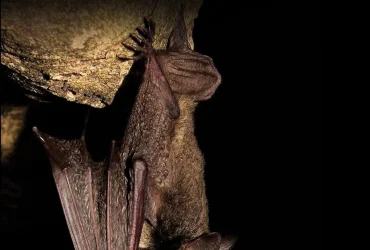 v6i1.123
v6i1.123ISSN: 1800-427X (print)
eISSN: 1800-427X (online)
DOI:10.47605/tapro.v6i1.123
Submitted date: 21 January 2014
Accepted date: 14 March 2014
Published date: 29 June 2014
Pp. 21–26, Pl. 8.
USE OF TEA PLANTATION BY WILD MAMMALS IN TAMIL NADU, INDIA
V. Gokula* & C. Thangatamil
*Corresponding author. E-mail: gokulae@yahoo.com
Abstract
Wild mammals that live in the fragmented primary forests in Western Ghats often leave the fragment due to resource shortages and use the nearby tea plantation either to forage or as a corridor to connect other fragments, during which time human-wildlife conflict is inevitable. Hence, understanding the need of wild mammals using the tea plantations is essential to minimize this conflict. We researched the use of tea plantations by wild mammals between October 2011 and January 2012 in Kolacamby, Nilgiris District, Tamil Nadu, India. Walks were made to determine the relative abundance of wild mammals inside the plantation. Scats of sloth bear (Melursus urisnus[i]), tiger ([i]Panthera tigiris), and leopard (Panthera pardus) found inside the plantation were analyzed to determine food habit. In addition, workers were informally interviewed about man-wildlife conflict. All major carnivores of the Western Ghats ecosystem were recorded in the area. Despite the richness of the fauna in the fragments, minimal human-wildlife conflict was reported.
Key words : habitat use, human-wildlife conflict, Kolacamby, mammals, tea plantation
Section Editor: Colin A. Chapman
eISSN: 1800-427X (online)
DOI:10.47605/tapro.v6i1.123
Submitted date: 21 January 2014
Accepted date: 14 March 2014
Published date: 29 June 2014
Pp. 21–26, Pl. 8.
USE OF TEA PLANTATION BY WILD MAMMALS IN TAMIL NADU, INDIA
V. Gokula* & C. Thangatamil
*Corresponding author. E-mail: gokulae@yahoo.com
Abstract
Wild mammals that live in the fragmented primary forests in Western Ghats often leave the fragment due to resource shortages and use the nearby tea plantation either to forage or as a corridor to connect other fragments, during which time human-wildlife conflict is inevitable. Hence, understanding the need of wild mammals using the tea plantations is essential to minimize this conflict. We researched the use of tea plantations by wild mammals between October 2011 and January 2012 in Kolacamby, Nilgiris District, Tamil Nadu, India. Walks were made to determine the relative abundance of wild mammals inside the plantation. Scats of sloth bear (Melursus urisnus[i]), tiger ([i]Panthera tigiris), and leopard (Panthera pardus) found inside the plantation were analyzed to determine food habit. In addition, workers were informally interviewed about man-wildlife conflict. All major carnivores of the Western Ghats ecosystem were recorded in the area. Despite the richness of the fauna in the fragments, minimal human-wildlife conflict was reported.
Key words : habitat use, human-wildlife conflict, Kolacamby, mammals, tea plantation
Section Editor: Colin A. Chapman
Hubungi Kami
The ultimate aim of the journal is to provide an effective medium for communication of the latest and best scientific information.
Copyright © 2020 Taprobanica. All Rights Reserved
Jasa Pembuatan Website by IKT




